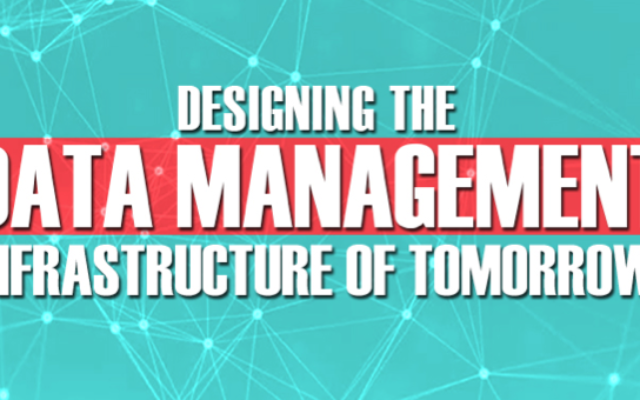Today, more than ever before, organisations realise the strategic importance of data and consider it to be a corporate asset that must be managed and protected just like any other asset. Considering the strategic importance of data, increasing number of farsighted organisations are investing in the tools, skills, and infrastructure required to capture, store, manage, and analyse data.
More organisations are now viewing data management as a holistic activity that requires enterprise-wide collaboration and coordination to share data across the organisation, extract insights, and rapidly convert them into action before opportunities are lost. However, despite the increasing investment in data management infrastructure, there are not many organisations that spend time and effort on anticipating the future events that may impact their data management practices.
From upcoming rules and regulations to the need to create better customer experiences in order to discover hidden value in customer journeys, there are a number of factors that demand a more proactive approach from organisational leaders and decision makers when it comes to the planning and design of an enterprise’s data management infrastructure.
Breaking Down the Data Silos
When it comes to efficient data management, the biggest challenge that enterprises need to overcome is the elimination of the silos that keep big data from coalescing to its full potential. What’s more, the ever-growing number of channels that retailers and other B2C businesses use to engage with customers is also contributing to the scope of the issue. From brick-and-mortar stores to ecommerce websites, mobile applications, and social media channels, each channel generates huge volumes of data that remains unshared by an organisation’s internal systems and departments. By breaking down these data silos, organisations can optimise productivity and enable a more holistic view of the customers they serve.
The easiest way a CIO or an organisation leader can determine if their data management strategy effectively addresses the problem of data silos is by answering this simple question: Do I have access to all the data I need, or do I need to collaborate with other departments to integrate data?
If the answer is no, you need to start tearing down the data silos in order to combine data from multiple sources and deliver improved experiences to your customers.
Get access to all the customer journey data you need from all required departments
Creating a Culture of Collaboration
Enterprises struggle to create a data-driven culture in order to realise the true business value of data. While there is no one-size-fits-all approach towards creating a data-driven culture as this depends on the people and the precise work environment of an organisation, there is a unique business model that can be used as an inspiration to create an effective data management strategy and plan data management infrastructure. It is called Agile.
The Agile approach is being used by renowned firms like Google, Spotify, Zappos, and Netflix. The purpose of this approach is to empower people to collaborate in multidisciplinary teams and enable them to make the right decisions quickly and effectively.
Here is an overview of how Agile works at Spotify.
At Spotify, the entire enterprise comprises of four types of units — squads, chapters, tribes, and guilds. Squad, which is the very basic unit of the organisation, is a multidisciplinary team whose members work together to achieve a shared goal. Chapters, on the other hand, are groups of people with similar expertise across various squads. Squads that work on related areas form a tribe, while guilds are loosely formed interest groups that any employee can join.
There are two primary characteristics of the agile approach used by Spotify. First, it creates alignment among all working groups, offering them greater flexibility and autonomy. Second, the agile approach supports a culture of innovation. As a result, this agile business model is best suited for organisations that serve customers with varying needs and must enable sharing of data among different departments to deliver an improved experience to their customers.
How agile works at Spotify. Source: full-stackagile.com
Preparing for the EU General Data Protection Regulation
The EU General Data Protection Regulation (GDPR) came into force in May, 2016 and B2C businesses operating in the EU have until May, 2018 to ensure their compliance to the requirements set out by this new customer data protection regulation. With fines as high as up to four percent of the annual revenues, organisations are left with no option but to rethink their data management strategy.
In its broadest sense, GDPR implementation will offer customers improved control over their personal data. But what does it mean for enterprises, particularly B2C companies? The implementation of GDPR will transform the way businesses manage data and run analytics projects. What’s more, the regulation also gives the power back to the ‘owner of the data’, allowing customers to determine who may store and use their data. This will be a huge headache for companies as they will serve the role of ‘data custodian’ and will be required to ensure that the data is accurate and up to date.
Considering the anticipated outcomes of GDPR implementation, one can easily deduce out that ensuring compliance will require extensive changes in the data management strategies and infrastructure of organisations; however, not many organisations are taking the necessary steps to prepare for the upcoming change.
Example of compliant data management & analytics setup of ‘tomorrow’
A whitepaper published by the collaboration of AvePoint and Centre for Information Policy Leadership reports that nearly 50 percent of organisations have not taken decisions regarding how to optimise their data management policies to ensure compliance to GDPR and almost 30 percent do not have additional resources available to embrace the change.
What this all boils down is that executives, particularly the Chief Information Officer, need to take responsibility optimise the data management infrastructure and policies of their organisations in order to ensure compliance and avoid hefty compliance. Apart from improved compliance, breaking down silos and optimisation of data management policies and procedures will also lead to improved customer experiences and help businesses extract more value from their customer journeys.
While this change in data management infrastructure requires extensive investment in new tools and technologies, developing the right mind-set is equally important. Businesses also need to create a data-driven culture that supports and facilitates data protection not just because it is a regulatory requirement, but also because it is the right thing to do to acknowledge and appreciate your customers’ trust in your products/services.
What is your opinion about Data Management Infrastructures of the Future? Let us know what you think.

Patrick Aarbodem is Managing Director of Adversitement.
Connect with Patrick on Linkedin and Twitter to learn more about Data Management
If you would like to connect with Ronald van Loon please get in touch.
Article by channel:
Everything you need to know about Digital Transformation
The best articles, news and events direct to your inbox
Read more articles tagged: Data Management, Featured










